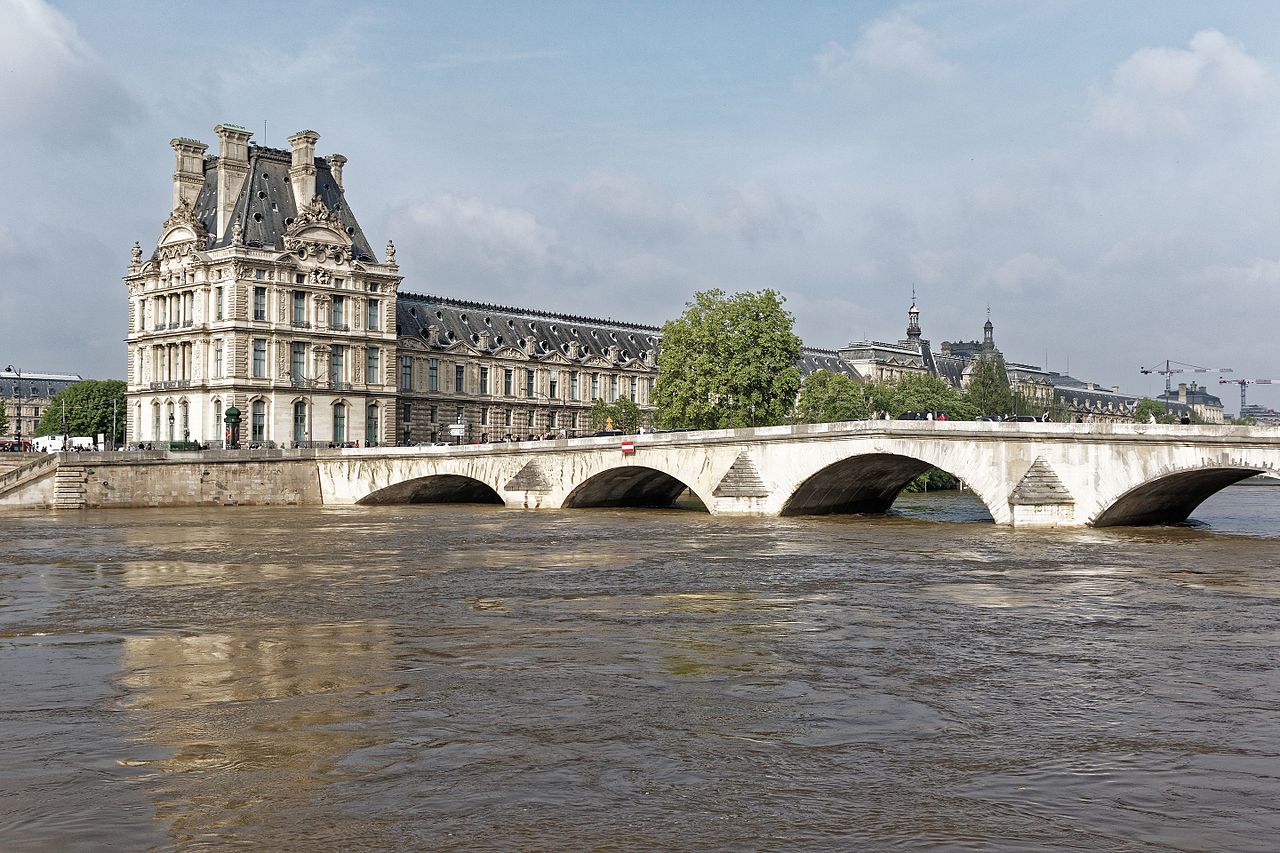Every Monday Tim Schneider, Director of Research at Kayne Griffin Corcoran Gallery and the brains behind The Gray Market Blog, dissects the most important stories of the week from the art market.
UNCHAIN MY HEART
On Thursday, Forbes became the latest mainstream publication to tease the art market’s possible “disruption” by startups—a topic that summons me from the depths to wreak havoc as dependably as a Cthulhu ritual.
In his piece for the vertical, writer Roger Aitken primarily focused on the possible game-changing ability of “decentralized” platforms like Synereo’s WildSpark and Opus (both now in beta). These two entities are built around the principle of protecting artists from, in Aitken’s words, “profit-skimming corporate structures.” How? Primarily by relying on blockchain-driven cryptocurrencies (see: Bitcoin alternatives), all used to buy, sell, and promote artists’ digital works directly.
For example, Aitken explains how WildSpark “uses a digital currency called AMPs [currently] worth about $0.23 each…as a way to reward creators monetarily, while creators are allowed to use the digital currency as a way to buy attention from users.” Similarly, both WildSpark and Opus institute some variation of what the latter calls a “bounty” system, in which users and “curators” can be paid for sharing content with other users.
Let’s set aside that, based on its white paper, Opus only seems interested in distributing digital music right now. Let’s also set aside that Aitken, whose career has been siloed squarely in finance and financial journalism, doesn’t seem to have much experience with the arcana of the visual-art market. Just consider his apparent confusion about the meaning of “patronage” here: “In the 19th century the [arts] patrons were rich barons and dukes”—a little reductive, but basically true—while “in the 21st century the patrons are centralized corporations.”
This statement holds up in the music industry, but it buckles when applied to the visual-art trade. The only ways to keep it upright would be to consider solely the acquisitions made by actual businesses, meaning a small fraction of the overall art market… or else to treat galleries and typical online distribution platforms as “patrons” rather than middlemen. And that would be as extreme a misinterpretation of roles as a groom trying to consummate his new marriage by cracking a headboard with the officiant rather than whoever he just put a ring on.
Even if we look past all of the above, though, my main concern about the article’s premise remains intact: namely, that “profit-skimming” isn’t the main obstacle separating new-media artists from a sustainable living today. A shortage of paying collectors is.
Granted, we don’t have many reliable numbers on the size of the digital-art market. (Don’t get me started on the Hiscox Online Art Trade Report again.) But amassing a large collection in this genre is still anomalous enough to make those who do it (like Julia Stoschek) persons of interest in the industry.
Similarly, independent new-media sales platforms that rely on good old-fashioned cash, like Sedition and Depict, still seem to have no more impact on the core art market than a couple of fruit flies hovering around a packed dessert tray. And so far, other new-media-driven startups have mostly been notable for dying off or getting digested into other forms. Just look at GIPHY’s acquisition and restructuring of digital display-maker Electric Objects earlier this summer.
All of which shows why “decentralizing” the digital-art market is a somewhat strange priority in 2017: Unlike digital music, it hasn’t really been centralized in the first place. Most potential patrons still see new media works as being too difficult, complicated, or risky to spend much money on anywhere, let alone one or two Apple Music or Spotify-like hubs.
To me, inserting a cryptocurrency into the mix only makes matters worse. Even paying with Bitcoin, far and away the most well-known of the blockchain denominations, is an extremely niche thing to do right now. So if new media works already create friction with much of their intended audience by their very nature, why create even more friction by tying their sale and marketing to a currency that barely anyone understands, let alone uses?
Decentralized platforms like WildSpark and Opus may be able to develop small, self-sustaining communities of artists, users, and curators. I hope they do, since that would make the future more interesting than the present. But when it comes to their prospects for "disrupting" the art economy at large, color me Skeptical Gray. [Forbes]

photo via The Verge
STATUES OF NEO-LIBERTY
In the wake of last weekend's Neo-Nazi catastrophe in Charlottesville, Virginia, debate continues to rage about what should be done to the US’s plethora of Confederate monuments. Among those advocating for the offending statues’ removal, Kriston Capps proposed that the freshly empty pedestals—specifically, those in Baltimore, whose mayor quietly eliminated a quartet of Old South memorials in a single night like some ninja of decency—should be reset with contemporary art.
As a model, Capps pointed to the Fourth Plinth program, which has brought a succession of commissioned sculptures to the unadorned statuary pedestal in the northwest corner of London’s Trafalgar Square since 1999. To date, the roster of participating artists already includes such well-known names as Katharina Fritsch, Antony Gormley, and (on view now) David Shrigley, with the results ranging from the intense to the conceptual to the lighthearted.
Depending on whose estimates you choose, southern and northern US states still collectively harbor somewhere between 700 and 1,000 Confederate monuments today (most of them not built until at least the 1890s, according to an insightful piece from my colleague Ben Davis on Thursday). That tally arguably calls for enough replacement artwork to justify a full-on successor to the Works Progress Administration's Federal Art Project, as artist William Powhida recently mused on Twitter.
Of course, unless the GOP-led Congress goes rogue on its constituents––55 percent of Republicans surveyed "strongly disapproved" of removing Charlottesville's Robert E. Lee statue after last weekend's events, per YouGov––this initiative couldn’t depend on federal funding. And with the exception of deep-blue, deep-pocketed cities like New York, public arts funding at the state and municipal level would likely be hard to come by, too.
All of which leaves a vacuum tailor-made for the private sector. If Agnes Gund can sow $100 million from the sale of one Lichtenstein into an Art for Justice Fund, is it preposterous to think that one of her progressive peers couldn’t or wouldn’t dedicate a similar stack to commissioning art that fulfills an equally public (and vastly more visible) moral crusade?
This would arguably be an even more appealing play for corporations than private citizens. I'll be the first to agree that there’s little inherently ethical about capitalism. But when American demographic data confirms that it already is, and will continue to be, better business to align your company with diversity and tolerance than fear-mongering and hatred, Adam Smith can unexpectedly bro-hug Martin Luther King.
Which is why North Carolina legislators just a few months back repealed the infamous "bathroom bill," HB2, under heavyweight pressure from major brands like Adidas, Paypal, and the NCAA. And why several of the CEOs in Trump’s manufacturing council resigned en masse after "many sides" felt his public response to the chaos in Charlottesville fell somewhere between the red neck and the white hood.
Now, there's a deeply troubling debate to be had about a nation that has to, or chooses to, transfer significant moral authority to corporations rather than elected officials or community leaders. And even if there weren't, replacing Confederate statues with contemporary sculptures is still an idealistic, left-wing hypothetical at this point.
However, you can make a bottom-line, business-minded argument for it. Which makes this the rare case where neoliberalism could bring about artistic, civic, and ethical progress at the same time. [CityLab]

Image courtesy: Newsplex
CLIMATE OF ACCEPTANCE
Finally this week, my colleague Julia Halperin shed light on the museum sector's growing sense of urgency over the dangers its collections face from climate change. Flash flooding, rising sea levels, and extreme storms seem to be the most menacing threats, with major institutions such as the Smithsonian's National Museum for African American History and Culture, the Whitney, and the Louvre already spending considerable time and money on shoring up their defenses.
Some of the measures being pursued include moving core operational spaces (like art storage, conservation, and even galleries) from basement or ground levels to upper floors; adding hundreds of thousands of dollars in waterproofing or water-tightness to key areas; and in the case of the University of Iowa Museum––effectively homeless since 2008, after flooding necessitated an emergency clear-out of its entire collection––even permanently relocating to higher ground.
Not surprisingly, though, I'm most interested in the personal and socioeconomic conflict embedded in this trend. True, Halperin's piece clarifies that climate-protection is by no means a universal or easy sell across the museum sector. Yet Andy Klemmer, whose Paratus Group construction-manages a portfolio of cultural projects worldwide, drops the following bomb on the prison of environmental belief: “Everyone, even the conservative board members who decry [the concept of] climate change, want their investment protected from its effects.”
In short, the existence of the big-money art market appears to be pushing many influential collectors to abandon––or at least, hedge against––their personal skepticism of environmental extremes, all for the sake of defending the works they've gifted to, acquired through, or otherwise financially supported in their institutions of choice.
Would the same people be pulling these 180s if their collections were only regarded as being worth a few thousand dollars instead of, say, a few million (let alone more)? Possibly.
Yet for most of us, our aversion to risk increases with the size of our potential loss. Which means the higher the price tags rise in the art market, the more incentive patrons gain to spend handsomely on protecting "their" museums against climate change––even if they've previously farted in the general direction of the science verifying its existence.
Ultimately, this dynamic benefits average museum-goers just as much as the investor class on the museums' boards... at least, assuming those of us in the former group can defend ourselves against intensifying floods and hurricanes just as effectively as the latter group can defend their donations. [artnet News]

That’s all for this edition. Til next time, remember: Sometimes you follow the money, and sometimes the money follows you.









